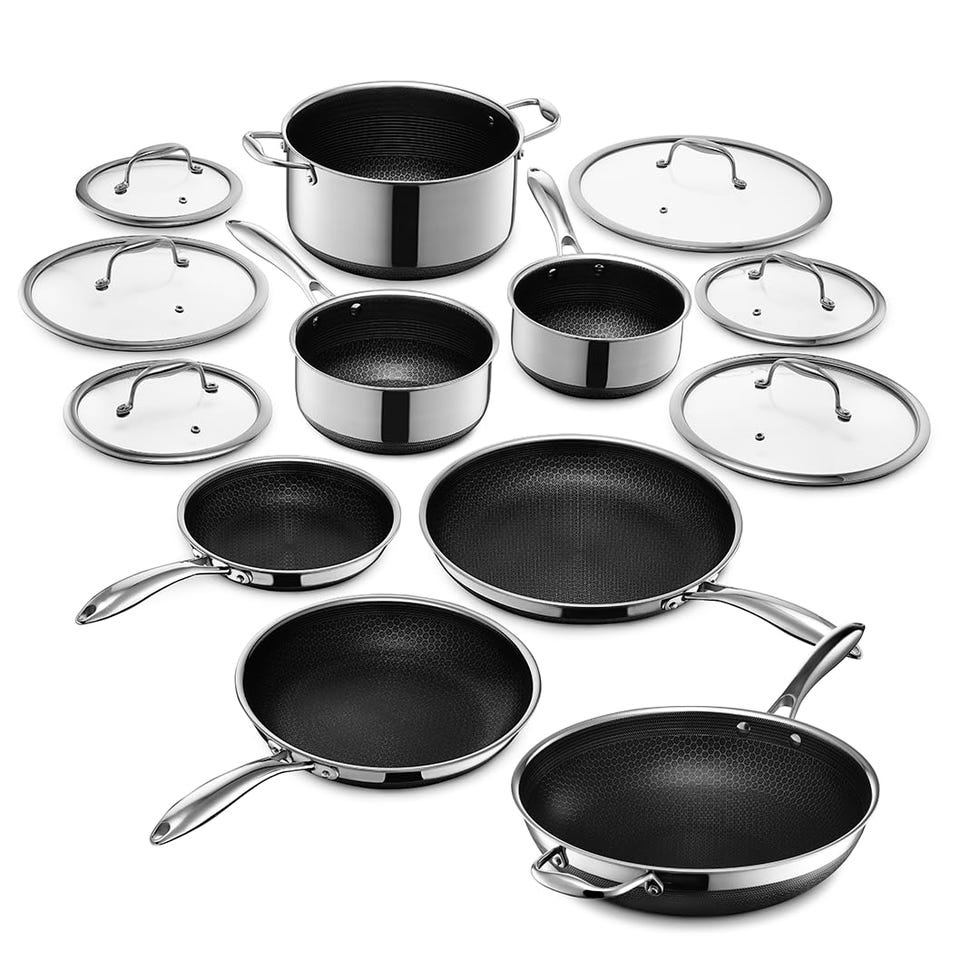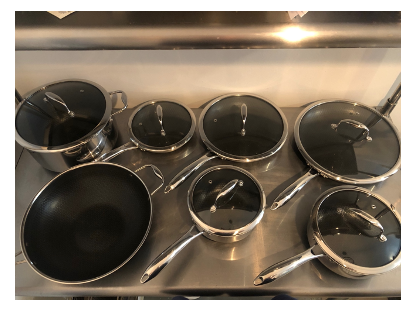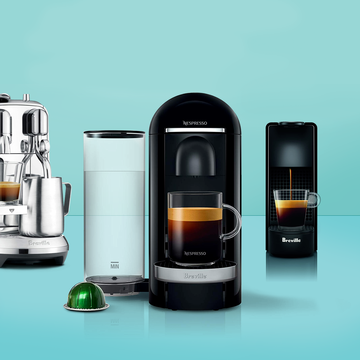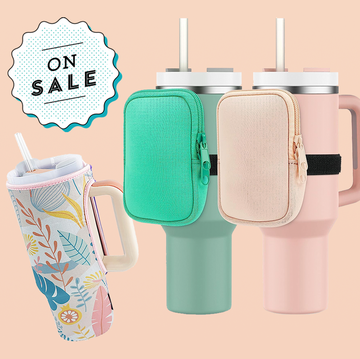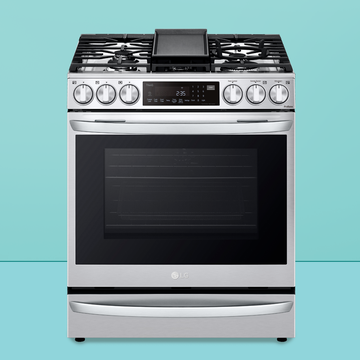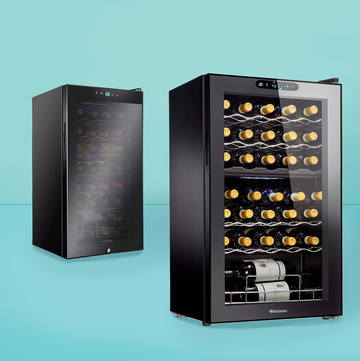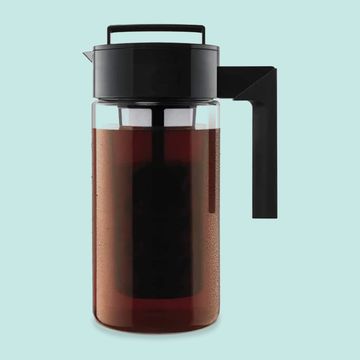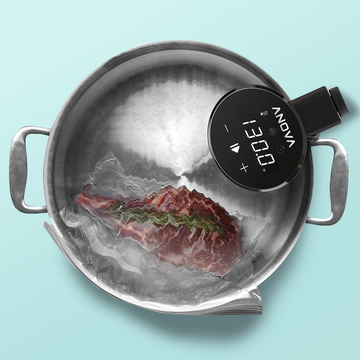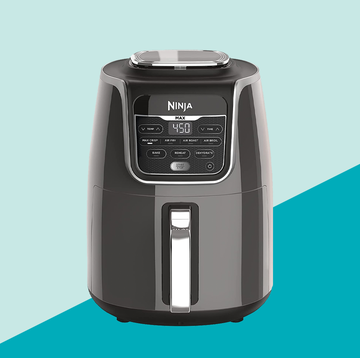If you've heard of HexClad cookware, it may be because Gordon Ramsay called them "the Rolls-Royce of pans." The brand claims they have the searing power of stainless steel and the egg-friendly ease of nonstick. The experts in the Good Housekeeping Institute Kitchen Appliances and Innovation Lab wanted to know if these pots and pans live up to the hype. We conducted our standard cookware tests on each piece: searing steak and cooking fried eggs and scrambled eggs in the skillets, boiling water and cooking pasta in the stock pot, simmering tomato sauce in the saucepans and making fried rice in the wok. We also assessed the heat distribution patterns and the ease of cleaning.
I'm Sarah Wharton, a deputy editor and product tester, and I've tested carbon steel skillets, nonstick cookware and Dutch ovens. After we tested HexClad cookware in the Lab, I took the 13-piece set home and got to work gathering some additional real-life data. Good Housekeeping also sent skillets and sets to consumers on our home testing panel through our GH+ membership club.
What is HexClad cookware?
HexClad pans are hybrid pans, meaning they offer the durability of stainless steel with the ease of nonstick cookware. The company states that it has achieved this by layering laser-etched stainless steel — which creates the eponymous hexagonal pattern — over a nonstick material. The cookware has an aluminum core for even heating, and a magnetic steel base, so you can use it with all cooktops, including induction cooktops.
The brand states that because of the stainless steel design, you can use metal tools — though, as with most cookware, sharp items aren't recommended since they could scratch the surface. HexClad also claims that these pans are oven-safe up to 500˚F, perfect for starting a dish on the stovetop and finishing it in the oven. The tempered glass lids are safe up to 400˚F.
HexClad describes its nonstick coating as a "Japanese coating infused with diamond dust." The company says the pans are free of PFOA, but it acknowledges that its cookware does contain PTFE (or polytetrafluoroethylene, which many know under the brand name Teflon). PFOA was previously used to make the nonstick material PTFE, a.k.a. Teflon. It has been linked to some health concerns, and there's growing concern for its prevalence in nature. It's important to know that the use of PFOA has been phased out of the United States cookware manufacturing process, but keep in mind that "[its replacements] haven’t been around long enough for researchers to fully understand if they might have the same (or even different) health effects," according to Cancer.org. That said, by and large, nonstick cookware is safe if you use it as instructed.
How we tested HexClad
We tested individual pans in the Lab according to our standard cookware methodology. We coat the skillets with a shortening-and-flour mixture to determine the heat distribution patterns; we also sear steak and cook fried eggs and scrambled eggs to assess browning and sticking. We boil water and cook pasta in the stock pot, noting the time it takes to boil and whether the pot's handles get hot. We simmer tomato sauce in the saucepans to test scorching, staining and cleanup. And we make fried rice in the wok to check the cooking area, browning and ability to stir. We also evaluate the ease of cleaning for each piece.
Then I tested the set in my home, and we sent pans to seven home testers. The testers were asked to use the pans three to five times over a period of about a month before completing a survey. These testers helped us gather an additional 175 data points.
Per HexClad's guidance on proper use and care, I seasoned each pan in the set before using it. Following HexClad's instructions, I heated the pan over medium-low, spread 1 tsp of vegetable oil over the interior and then left it for 1 to 2 minutes before using. Over the course of testing, I also washed the pans by hand after using them, dried each pan thoroughly (with a towel or over a low flame) and reseasoned them if I washed them with soap.
I cooked a variety of dishes including thick strip steaks, butterflied chicken breasts, pork tenderloin, beef and veggie stir-fry, roasted shallots, plain white rice, coconut rice, tomato soup and chicken soup. I also reheated pizza and fried bread for toast. A colleague made a vegetable fried rice and was pleased with the browning on the mushrooms.
Using the pans, I was able to get a good sear on the meats, and I appreciated the option to add a lid to help the chicken stay moist. Thanks to the high temperature rating on the pan, I could start the steaks on the stovetop and finish them in the oven. I also used the largest skillet (12 inches) to roast two pork tenderloins at once. One home tester reported similar results, saying, "This product cooked chicken and steak evenly with a beautiful sear." But she noted that she "had trouble" with "foods like veggies."
I was able to double my tomato soup recipe thanks to the 8-quart capacity of the largest pot, and one of the chicken soups I made used a whole chicken, with plenty of room for aromatics. I found that even the sticky coconut rice cleaned up easily.
I also cooked fried eggs, scrambled eggs, an omelet and the viral feta eggs. In my tests, the eggs actually slid out of the pan on their own or with just the small nudge of a spatula. I did use oil: Though the pans were seasoned and claim to build up a nonstick patina over time, I treated them more like stainless steel cookware out of the box (and I also like crispy edges on my eggs). But one home tester reported that fried eggs stuck: "When cooking fried eggs, there does seem to be some sort of grooves that the egg would get a little stuck in."
What we liked
There was a lot to like about this set, though some of the pros are also cons, depending on your perspective.
- The mix of pieces is good: Three skillets (8-, 10- and 12-inches, with a 10- and 12-inch lid), three pots (2-, 3- and 8-quarts, with lids for each) and a 12-inch wok, which is less common in cookware sets but a great inclusion.
- The pans are durable. They're certainly heartier than nonstick pans while delivering on some of the same appeal.
- They heat evenly and are oven-safe up to 500˚F. They're also compatible with gas, electric and induction cooktops, so you can start on any range and finish in the oven for versatility.
- They're easy to clean. They're dishwasher safe, but HexClad recommends handwashing, as the dishwasher could cause the pans to become etched, dull or black over time. The good news: I found these pans quick to handwash since foods were less likely to stick.
What to take note of
With this set, a few of the upsides have a downside.
- The durability of these pans makes them heavy. They're fairly well-balanced but could cause strain for some users.
- There are a lot of lids to keep track of. If you are always cooking for a large crew, you might be using your pots and pans at the same time, which can require all lids on deck. But if you more frequently use one or two pans at a time, you'll have to find storage for the extra lids, which have somewhat tall handles.
- You'll need to season each piece before using it. HexClad's guidance is to season "before the first use or after a deep clean." It's an easy process, but some people are intimidated by seasoning, and it certainly adds a step that traditional nonstick and stainless steel cookware don't require.
- High heat is not recommended. According to the brand, "Our pans perform the best on low to medium heat. Cooking on high heat will cause oil to burn and cause build-up, which is not covered by our warranty program." So you'll need to monitor your burner and adjust your cooking style if you're used to higher heat.
- The pans are pricey. HexClad pans are not as expensive as top-of-the-line stainless sets, but even the smallest pan (a 7-inch fry pan) is over $100. Outfitting your kitchen with all-HexClad-everything (including the brand's knives, lidded bowls, cutting boards and an apron) would set you back $2,200 — on sale.
The bottom line: Is HexClad cookware worth it?
HexClad is worth it if you cook with nonstick often and are looking for cookware that could last longer. If you're willing to put in the extra work to care for your pans — hand wash more than you put them in the dishwasher, dry them thoroughly and season them as needed — you'll likely find that you don't need to replace your pans as often. We found that HexClad cookware offers the benefits of nonstick cookware and is sturdier than and provides a better sear than most nonstick pans.
The pots and pans are not as lightweight as most stainless steel ones, and some home testers didn't think HexClad offered enough innovation to warrant such a pricey purchase. But, even with the seasoning, these pans were easier to care for than carbon steel or cast iron ones. And the set comes with a very nice mix of pieces; I particularly appreciated the inclusion of the wok, which is less common. I ultimately think the term "hybrid" is fair: It's a versatile design that can provide a lot of function in the average kitchen.
Why trust Good Housekeeping?
Deputy Editor Sarah Wharton is a trained cook who has been testing kitchen appliances, tools and gear since 2017. She helped develop the GH Institute's methodology for testing carbon steel skillets and has tested several types of cookware.
Sarah (she/her) is a deputy editor in the Good Housekeeping Institute, where she tests products and covers the best picks across kitchen, tech, health and food. She has been cooking professionally since 2017 and has tested kitchen appliances and gear for Family Circle as well as developed recipes and food content for Simply Recipes, Martha Stewart Omnimedia, Oxo and Food52. She holds a certificate in professional culinary arts from the International Culinary Center (now the Institute of Culinary Education).

